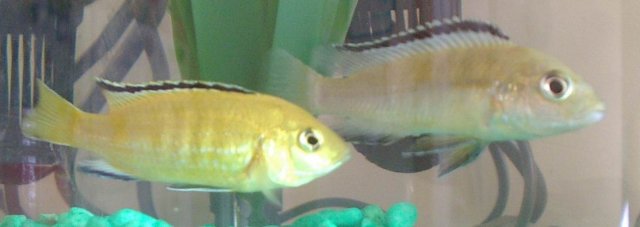Mbuna's, though aggressive, are social fish. In many cases particular genders will behave a certain way toward members of their own as well as different genders:
a. when matured/maturing, males will challenge each other for dominance, in the form of intimidation displays to downright fighting. The males do not have to be of the same species.
b. when matured/maturing, males will attempt to attract females by displaying, or in some cases, driving off non-receptive females.
c. mbuna's of both genders may behave territorial or attempt to dominate each other.
It takes some time to interpret these behaviors and correlate them to a particular gender, but while their genders may be unclear to us, they're extremely clear to the fish themselves, so observing how the act and interact offers clues (especially with matured fish).







